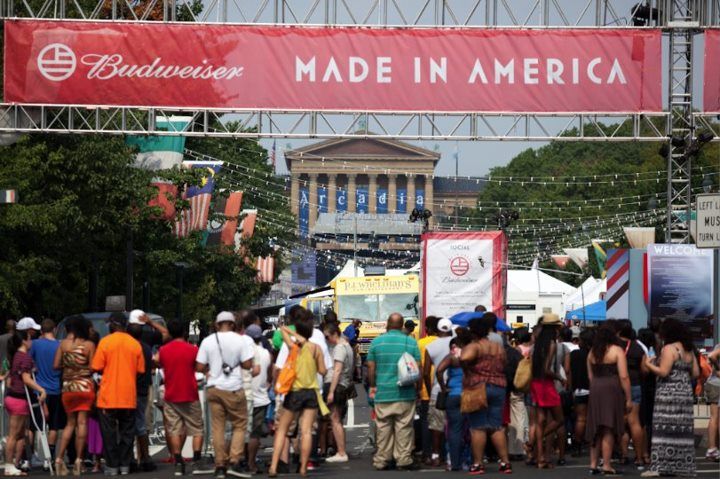The biggest copycats in the world may be America’s city administrators. Convention centers. Waterfront redevelopment. Bike lanes. Ideas are contagious, particularly when big cities are competing with one another to capture the ever-elusive creative class. Philadelphia’s two-day Made in America festival, which drew comparisons to Chicago’s Lollapalooza and Austin’s SXSW before a single note was strummed, indicates that big-ticket, recurring music fests may be the latest fad amongst city administrators looking for a surefire, short-term economic development tool.
And why not? The economic impacts for local businesses can be immense and festivals require little municipal investment beyond security and a staging area, with promoters sometimes being induced to pick up the tab for even some of these expenses. But, it is less tangible aspects that truly excite city officials: The promise of an endless fusillade of tweets, “likes” and texts that function as free advertising for the city, aimed squarely at the coveted 18- to 34-year-old demographic.
Made in America, headlined by ’90s music legends Jay-Z and Pearl Jam, and with tickets ranging from $99 to $350, seemed specifically geared to attract post-graduate professionals.
“Philadelphia, in the last decade, has added probably 10,000 or 15,000 new residents,” said Mark McDonald, press secretary for Mayor Michael Nutter. “We have added almost a whole new city, a whole new town. We have more and more young people staying in the city, and we want to attract and keep those residents. This kind of event appeals to them. We want their hometown to be a cool place.”
“The biggest benefit to the city was a live-stream event that goes all over, and the buzz that goes all over the age groups and all the people that hear about this thing,” he added.
But trendy new tools also bring new challenges. While security concerns and medical emergencies were virtually non-existent, the biggest gripe amongst concertgoers was that they weren’t able to do exactly what the city wanted them to: tweet about the concert. At the concert’s peak, cell service was completely overloaded by the estimated 40,000 attendees that arrived on the first night.
McDonald said that the city and event promoters, a division of Live Nation, met with Verizon ahead of time to secure a “cow,” a sort of mobile cell tower that is wheeled in for large gatherings, like the city’s Fourth of July “Welcome America!” festivities.
“Given the size of the ‘Welcome America!’ crowd, which attracts probably 400,000 to 600,000 people, we thought we were okay,” said McDonald, who acknowledged that he had personally had difficulty sending text messages during the event.
But the city and Verizon underestimated exactly how much internet service tech-savvy young people demand, even when they are ostensibly watching an elaborate musical performance. Both the Philadelphia Inquirer and CBS News ran recaps of the event that mentioned the communication failures, and speculated that they impeded the cultural impact of the concert, underlining the significance the internet plays in a city’s attempts to rebrand itself as hip, tech-centered locale.
If Philadelphia gets a second shot at Made in America — which is still uncertain, as ticket sales were about 25 percent below expectations — the city has pledged to do better. “Both the mayor and concert promoters are interested in [hosting the festival] next year,” said McDonald, “and I think there will be a retrospective and analysis on all sides. Certainly the social media communications piece here is something that everyone is interested in addressing because that’s what young people want.”
Whether the event pays off in sheer economic terms remains to be seen, as the city has said it is still tabulating the full cost of municipal services and determining exactly how much of that Live Nation will chip in. For now, it does seem certain that the city has gotten a smaller bump to its social media profile than officials hoped.
“I feel confident that individuals that had trouble texting during the concert still did so after they left,” said McDonald.
_200_200_80_c1.jpg)
Ryan Briggs is an investigative reporter based in Philadelphia. He has contributed to the Philadelphia Inquirer, WHYY, the Philadelphia City Paper, Philadelphia Magazine and Hidden City.
















